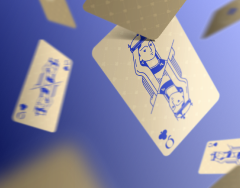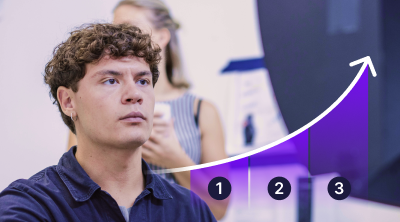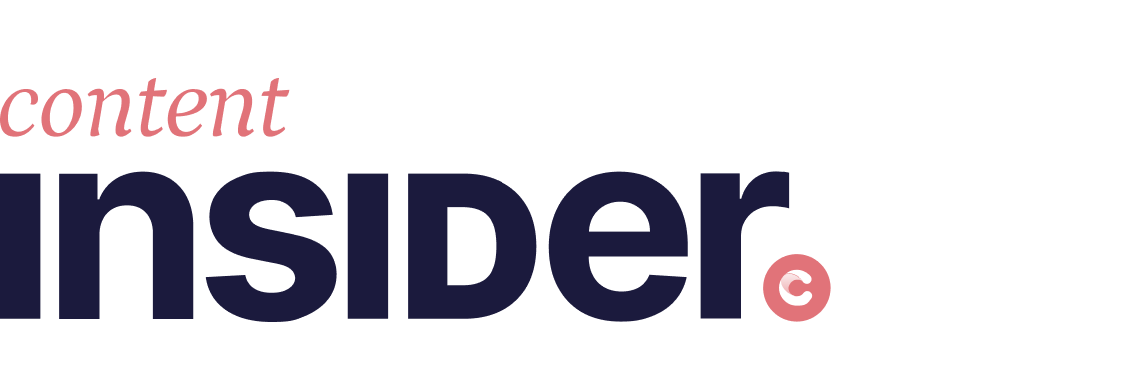
A weekly newsletter exploring the intersection of creative operations, technology, and online retail.
#021: AI Won’t Replace You (But It Will Redefine You)
Not long ago, I was talking to a studio leader who asked a question I’ve been hearing more and more: “Do you think AI is going to replace all of us?”
It’s an understandable concern. Everywhere you look, there’s a new headline about AI or a tool promising to cut production time in half.
And in high-volume environments—where speed already feels like everything—it’s easy to wonder if human creativity might be on its way out.
But here’s what I’ve seen, working closely with studios around the world: creative roles are evolving. Fast.
This week, I want to share why I believe the most successful creatives won’t be the ones who fight AI or even the ones who master it, but the ones who learn how to direct it. The ones who still bring taste, judgment, and storytelling to the table—only now, with new tools at their side.
Because in a world full of “good enough” content, it’s not the tools that will set you apart. It’s your eye. Your instinct. And your ability to decide what actually feels right.
Let’s talk about what changes and what stays.
The Work’s Still There. It’s Just Moved
I used to think speed was the main promise of AI. Faster workflows. Fewer bottlenecks. Get more done in less time. And in high-volume studios, that sounded like the dream. But the more I see it in action, the clearer it becomes: speed is just the start.
In the studios I talk to, no one’s afraid of automation. They’re too busy keeping up. What they are wrestling with is a shift in focus, from doing the work to guiding it. AI can retouch, crop, write, and tag. But someone still has to decide if it looks right. That’s the new job.
It’s not that the work disappears, it just moves:
- A retoucher becomes a visual quality lead, focusing less on pixel-level edits and more on ensuring every asset feels consistent, authentic, and on-brand.
- A copywriter becomes an editor, shaping tone and making sure the AI doesn’t write something off-brand or just plain weird (yes, it still happens).
- A stylist becomes a brand interpreter, reviewing AI-generated compositions and making the final call on what aligns with the brand’s aesthetic.
Studios aren’t just executing anymore. They’re orchestrating: overseeing creative direction, making judgment calls, and aligning outputs with the brand voice.
And this shift isn’t a loss. It’s a promotion. It asks more of us. Not just our time, but our taste. Our instincts. The ability to say, “This works. That doesn’t.” AI can suggest, of course, but it can’t care. That part’s still up to us.
So the question isn’t “Will AI do the work for us?” It’s “What kind of creative leaders will we need to become because of it?”
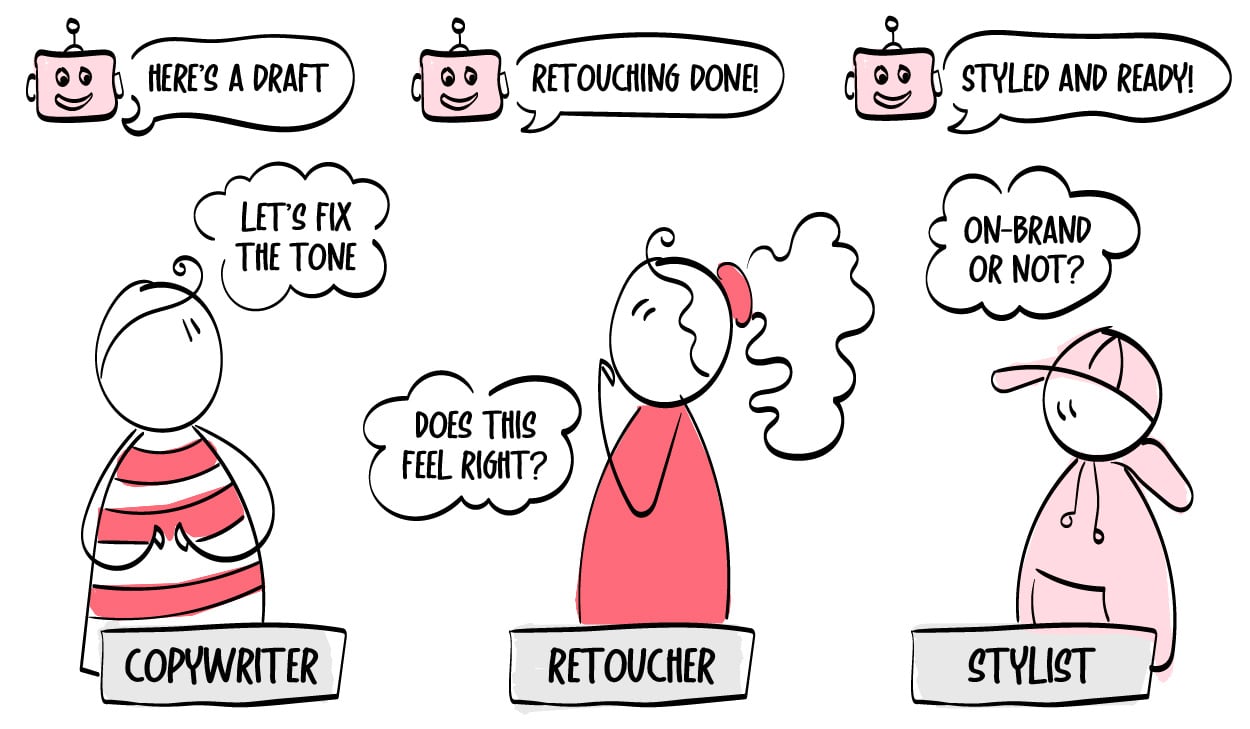
Taste Is the New Competitive Advantage
The more accessible AI becomes, the more I believe this: taste will be the next big differentiator.
Think about it. Every studio now has access to the same tools:
- Generative AI
- Automated retouching
- AI-led copywriting assistants
That tech edge used to be a competitive advantage. Now? It’s just table stakes.
What stands out today isn’t how much content you can produce, but how good your judgment is in choosing what’s worth publishing. Taste has always been important, of course, but now it’s front and center.
It’s the human filter between what the AI gives you and what your audience actually sees.
It’s knowing:
- When the copy sounds off.
- When an asset feels too perfect.
- When the vibe isn’t quite right (even if the specs are).
You might not notice it right away, but it’s there in your daily approvals, your gut call on which version of an asset to publish, or the way you coach your team on brand tone.
I spoke with a creative lead recently who said their team spends less time creating and more time curating. I love that. Because that’s where the real value lies now, not in the volume of output, but in the refinement of it.
Taste is hard to teach, but impossible to ignore. And in a world of infinite content, the brands that win are the ones who still know what not to use.
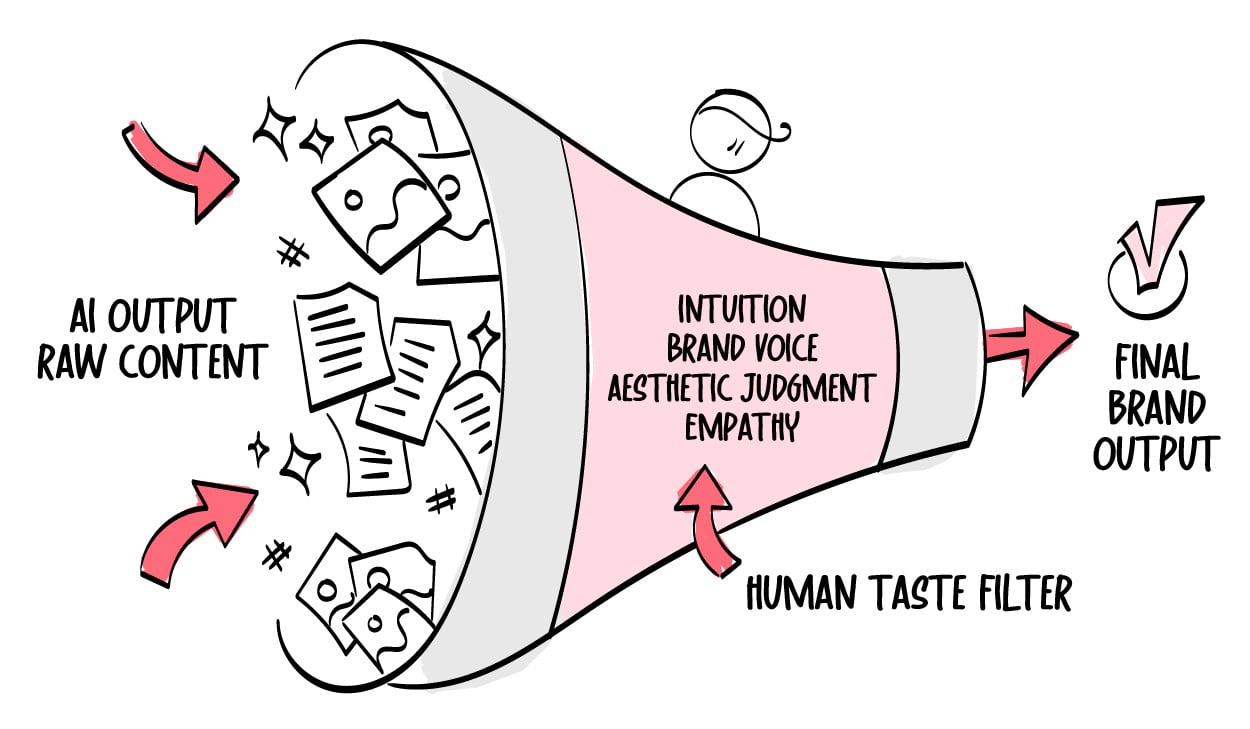
Expertise: Rewritten
It’s easy to feel overwhelmed by how fast things are changing. New tools. New workflows. A growing sense that if you’re not moving faster, you’re falling behind. I’ve felt that pressure too.
But here’s what I keep coming back to: the best studios aren’t just adapting to AI. Instead, they’re redefining what it means to be great. They’re not focused on how much they can automate. They’re focused on where their human judgment makes the biggest difference.
Because that’s what still sets you apart. Your ability to decide what’s on-brand. What feels right. What tells the story your audience actually cares about. AI may do more of the heavy lifting, but you’re still the one steering the ship.
So if you’re feeling uncertain, take heart. The value of your work is shifting.
Warmest,
Thomas

|
Thomas Kragelund Follow me on LinkedIn. |
Get Content Insider In Your Inbox.
The weekly newsletter packed with actionable tips, industry trends, and insider insights from Creative Force CEO Thomas Kragelund. Stay ahead in creative production and online retail—subscribe now to gain the insights you need to drive growth and stay competitive.

